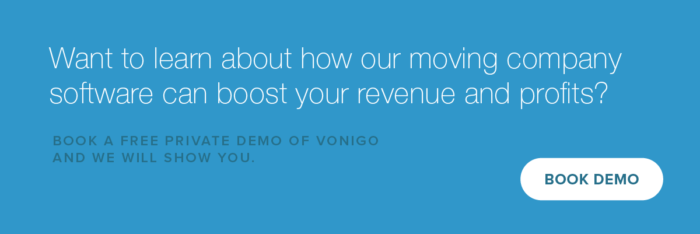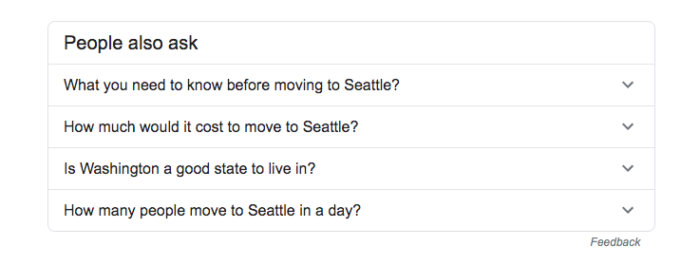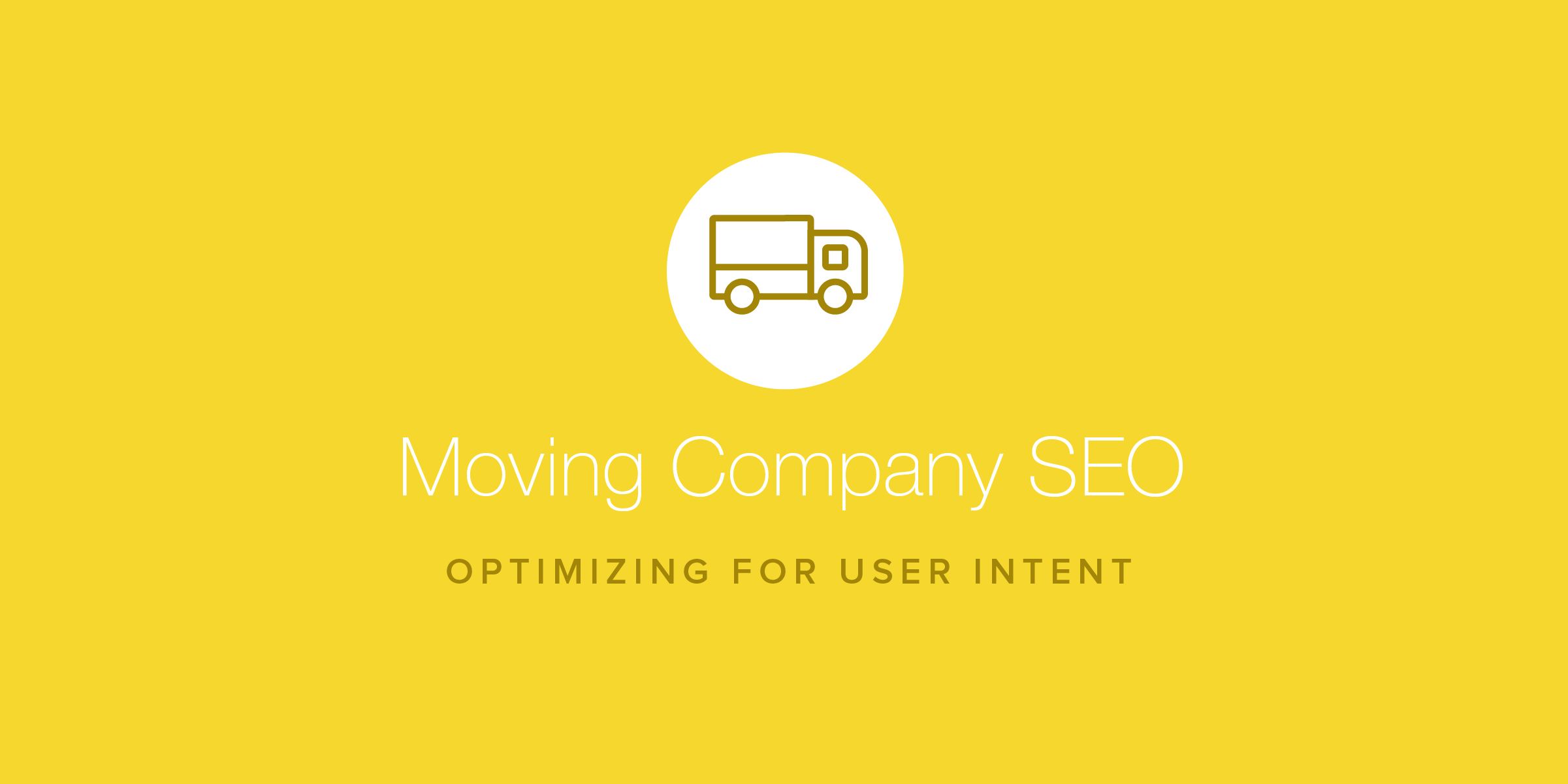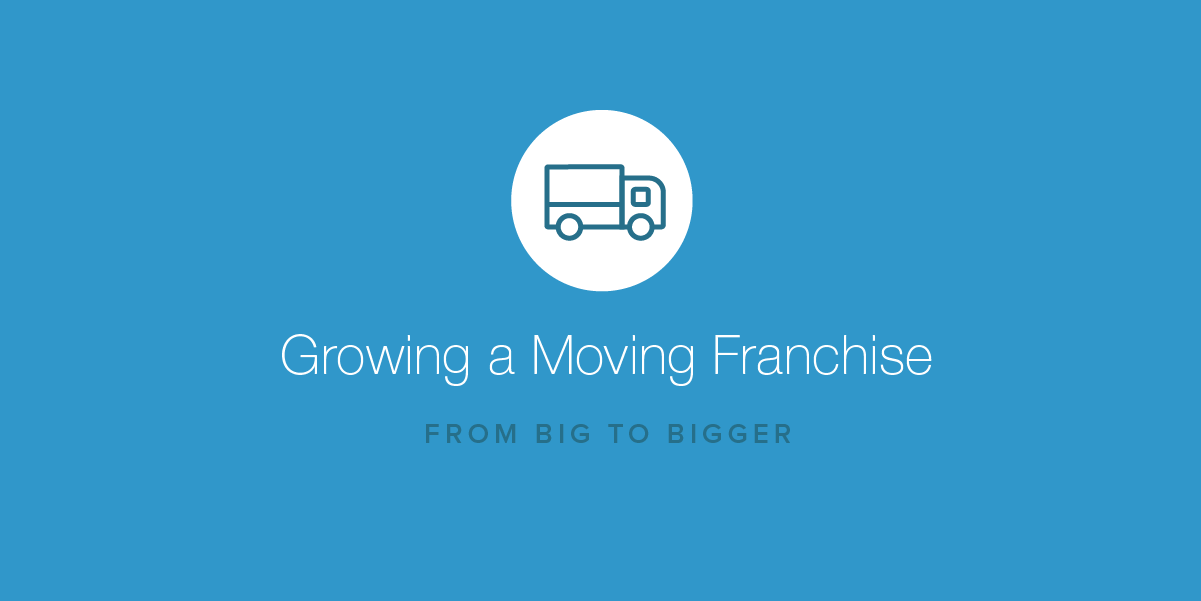A Guide to Optimizing Your Moving Company SEO for User Intent
- November 29, 2019
- By: Vonigo
This article about optimizing moving company SEO for user intent is by Matthew Woodley, Founder of MoverFocus.com.

With well over one billion websites in existence, it can feel nearly impossible to get people to visit yours. However, if you learn to harness the power of optimizing your moving company SEO for user intent, then you could become significantly more successful at driving relevant traffic to your site.
Designing your content in this manner will also help you obtain higher search engine result rankings. Stay tuned to learn what user intent is, the reasoning behind it, and how to put it to work for your moving company.

What is User Intent?
User intent is what a person is looking to accomplish when they type keywords into the search bar of a search engine. Thinking beyond exact keywords to determine what people really want is user intent.
There are three main types of user intent that you must understand:
Informational
This form of user intent is all about gaining knowledge. Generally, these searches are done by people who are not necessarily looking to make a purchase at the time but simply want to obtain information.
Businesses sometimes make the mistake of filling their content with sales pitches when users primarily landed on their site to learn about the company’s services.
Transactional
Transactional user intent is employed by people who want to accomplish something like making a purchase. These people generally are in a buying mindset. Cutting down on the fluff and giving them the information they need to help them get the product they want will meet their needs.
An example of content optimized for transactional user intent includes this article on the best international shipping companies. If someone were to search those keywords in Google, they would most likely want a list of companies that they could choose from when they need to ship something internationally. This article provides just that.
Navigational
These searches have the purpose of learning where something is located. People want this information to be clear cut and succinct. Quite often people want to know about shops and organizations that are near them. Knowing this will help you to plan your content accordingly.

Why Pay Attention to User Intent?
Now that you know what user intent is, you need to understand why it is so important.
Focusing on user intent helps drive quality prospects to your site. It is much more valuable to attract ten people extremely interested in making a purchase than 100 who have no intention of booking. As a result, paying attention to user intent is a much more cost-efficient way to drive traffic to your company’s website.
Creating content with user intent in mind is also much more engaging for the customer. This type of content paves the way toward building a valuable relationship with a potential client. When it is done right, the customer thinks, “Wow, this is exactly what I was looking for, they read my mind.” They will feel as though the material was written for them individually. If you can do that for your readers, then it is likely that they will keep coming back for more.
On the flip side, search engines want to match searchers with relevant information. You can help them do this by writing your content with the needs of the reader already in mind. If you optimize for the right keywords too, then you are well on your way to getting on the first page of search engine results.

Focus on Content for People
Many companies and blogs focus so much on optimizing their keywords to fit algorithms that they lose sight of who the content is actually for: people.
If you don’t create content that works to answer people’s questions and help them find what they are looking for, then it does not matter how perfectly you place keywords. Always remember that the people you need to serve are those who will be reading your content.
This sentiment is not to say that using keywords is not necessary, but rather to realize that keyword utilization is not the only moving company SEO tactic you should employ.
Know Your Market
It will be impossible for you to optimize your content for every type of user intent at once. You will need to evaluate the goals of the content you are writing. You will also need to assess which types of searchers you want to target. It will be impossible for you to know what your customer wants if you have no idea who your customer is.
One way you can go about this is to create profiles for the kind of person you want to target from your existing data. Some things to consider are age, income, preferences, desires, and buying patterns.

Optimizing Your Moving Company SEO
Now that you know the basic concepts behind user intent and some general things to keep in mind let’s go into how to put this all into practice. After all, knowing theoretically how to do something is never as effective as executing it.

Google Your Keywords First
Before you ever pick up your pen or start typing, you should Google the keywords you are thinking of using. Examine the results. Are they similar to what you were planning on writing? Pay special attention to the paid ads because it is likely that the companies purchasing these ads have done their homework and know what people are looking for when they use this keyword.
Next, look at the organic results. Are there any similar themes that are coming up repeatedly? If so, you may want to choose one as your angle for your content. Looking at the “questions people also ask” can inform your work too. This section often helps add content to your article that is helpful but not as direct.
Finally, looking at the related searches will help you see what people might search to refine the answers they received. If you address these topics in your content, then you will be one step ahead of your reader, and they will appreciate the forethought.

Use Data You Already Have
Once you have an idea of what Google has to say about particular keywords, think about what you know your customers need and want. Consider going through survey data and emails to see what questions they are asking. Can you address these questions in your content? Or maybe you can update or expand your frequently asked questions page on your website to be more productive.
Structure Your Articles
Once you figure out what people are really looking for, make sure that your content is structured in a way that delivers the desired information in a way that makes sense and answers the question the searcher is asking.
For example, if you determine that searchers want a list of things to do before moving to Seattle, don’t expect to compete with content about Seattle tourism and trivia. This searcher has already decided they are moving to Seattle and want an actionable list of moving steps to follow. Who better than a moving company to give them an insider’s perspective about moving to the Emerald City?
Including large amounts of fluff might deter an interested customer from continuing to read until they get to the information they need. Publish content that is designed to match their intent and you have a better chance of winning that traffic.

Address Primary and Secondary Intent
If you know what your audience is looking for as well as information they might be interested in, then you can write content that kills multiple birds with one stone and will keep people coming back for more. People love one-stop shops. If you can save shoppers time by including several relevant talking points, then it will be much appreciated.
Anticipating your customers’ needs in your content as well as your service is the best way to enhance your brand. Looking at the other questions people ask and related searches will prove immensely popular in this quest.

Analyze Past Content
Putting user intent at the forefront doesn’t have to be something you can only apply to future content. You can take things you published in the past and make edits to make them fit the mold of user intent more fully.
Ask yourself what keywords you could use to meet the search intent of your audience. Consider your pieces up against your competitors. Did you miss the mark where your competitor excelled? Make suitable changes and watch your existing content begin to perform better than ever before.
Putting User Intent First
Even though the internet marketing realm can be competitive and cutthroat, that doesn’t mean that you can’t keep up. You can now put a thorough understanding of user intent to work for you and your business. As long as you always keep your customers’ needs at the forefront of your content creation, then you will be sure to please any visitors that land on your site.
Want to learn about how moving software can help you turn more website visitors into more moving bookings? Book a free, private demo of Vonigo.


